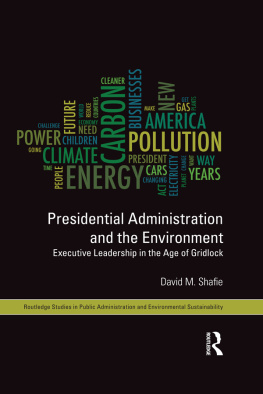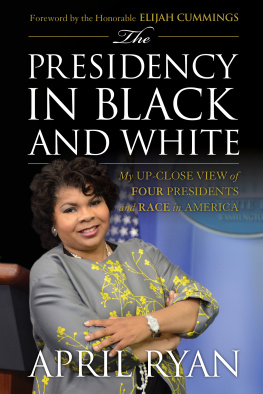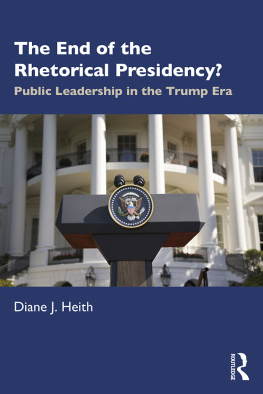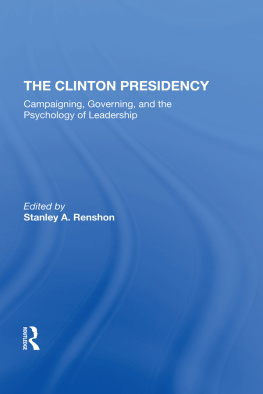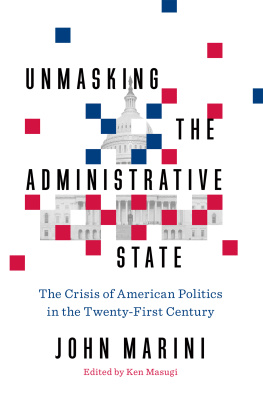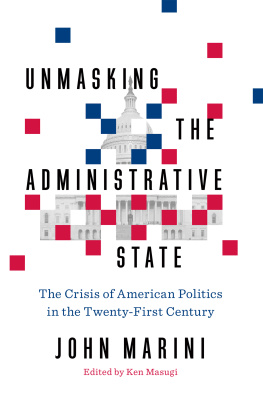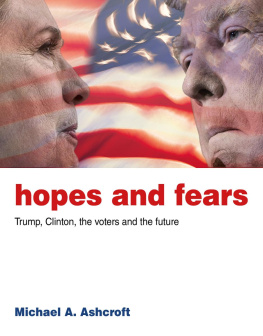Shafies The Administrative Presidency and the Environment is a welcome addition to the literature. It offers keen insight into the exceptional role of the presidency in shaping U.S. environmental policy, and with its focus on the Trump administration, it brings much-needed critical evaluation of how the administrative presidency can reshape core environmental policies even without passage of new legislation.
Michael Kraft, Professor Emeritus, Political Science and Public and Environmental Affairs, and Herbert Fisk Johnson Professor of Environmental Studies Emeritus, University of Wisconsin-Green Bay.
Never before has the discussion on environmental policy been more important, yet our ability to resolve environmental problems remains seriously limited. The Administrative Presidency and the Environment provides a roadmap of how we have reached this point and, by extension, a map forward. Shafies analysis of the growth of the administrative presidency replacing statutory progress with regulatory efforts, is an important foundation in understanding environmental policy making in the United States. Shafies detailed assessment of these dynamics is a valuable resource for scholars of environmental policy as well as those for whom this book is a first read on environmental issues.
Matthew A. Cahn, Vice Provost, California State University Northridge.
David Shafie offers an especially useful analysis of how recent American Presidents from Clinton through Trump have used executive authority to expand or reduce the scope of environmental policymaking. His discussion of substantive policy cases dealing with natural resources, pollution control and climate change reveals that key decisions are increasingly made by chief executives rather than legislators thanks to their ability to apply various approaches such as rulemaking, appointments, discretionary judgments, and budgetary priorities.
Charles Davis, Colorado State University.
The Administrative Presidency and the Environment
The growth of the administrative state and legislative gridlock has placed the White House at the center of environmental policymaking. Every recent president has continued the trend of relying upon administrative tools and unilateral actions to either advance or roll back environmental protection policies. From natural resources to climate change and pollution control, presidents have more been willing to test the limits of their authority, and the role of Congress has been one of reacting to presidential initiatives.
In The Administrative Presidency and the Environment: Policy Leadership and Retrenchment from Clinton to Trump, David M. Shafie draws upon staff communications, speeches and other primary sources. Key features include detailed case studies in public land management, water quality, toxics, and climate policy, with particular attention to the role of science in decision-making. Finally, he identifies the techniques from previous administrations that made Trumps administrative presidency possible.
Shafies combination of qualitative analysis and topical case studies offers advanced undergraduate students and researchers alike important insights for understanding the interactions between environmental groups and the executive branch as well as implications for future policymaking.
David M. Shafie is an associate professor in the Department of Political Science at Chapman University.
First published 2020
by Routledge
52 Vanderbilt Avenue, New York, NY 10017
and by Routledge
2 Park Square, Milton Park, Abingdon, Oxon OX14 4RN
Routledge is an imprint of the Taylor & Francis Group, an informa business
2020 Taylor & Francis
The right of David M. Shafie to be identified as author of this work has been asserted by him in accordance with sections 77 and 78 of the Copyright, Designs and Patents Act 1988.
All rights reserved. No part of this book may be reprinted or reproduced or utilised in any form or by any electronic, mechanical, or other means, now known or hereafter invented, including photocopying and recording, or in any information storage or retrieval system, without permission in writing from the publishers.
Trademark notice: Product or corporate names may be trademarks or registered trademarks, and are used only for identification and explanation without intent to infringe.
Library of Congress Cataloging-in-Publication Data
Names: Shafie, David M., author. | Routledge (Firm)
Title: The administrative presidency and the environment : policy leadership and retrenchment from Clinton to Trump / David M. Shafie.
Description: First Edition. | New York : Routledge, 2020. | Includes bibliographical references and index. |
Identifiers: LCCN 2020006240 (print) | LCCN 2020006241 (ebook) | ISBN 9781138596139 (Hardback) | ISBN 9781138596146 (Paperback) | ISBN 9780429487927 (eBook) | ISBN 9780429947391 (Adobe PDF) | ISBN 9780429947377 (mobi) | ISBN 9780429947384 (ePub)
Subjects: LCSH: Presidents--United States--Case studies. | Environmental management--Political aspects--United States--Case studies. | Environmental policy--United States--Decision making--Case studies. | Political leadership--United States--Case studies. | Political culture--United States--Case studies. | United States--Politics and government--Case studies. | Executive power--United States. | Administrative agencies--United States--Management.
Classification: LCC JK511 .S537 2020 (print) | LCC JK511 (ebook) | DDC 363.7/05610973 223--dcundefined
LC record available at https://lccn.loc.gov/2020006240
LC ebook record available at https://lccn.loc.gov/2020006241
ISBN: 978-1-138-59613-9 (hbk)
ISBN: 978-1-138-59614-6 (pbk)
ISBN: 978-0-429-48792-7 (ebk)
This book is dedicated to Tara, who will be the beneficiary of the choices we make today.
A number of people contributed to this book, and it certainly would not have been possible without them. Matthew Cahn was a source of advice and encouragement and helped persuade me that it was an idea worth pursuing. I am especially grateful to Robert Durant and Daniel Fiorino for providing constructive feedback on early versions of the manuscript. I also wish to thank Natalja Mortensen, Charlie Baker, and the staff at Routledge for guiding me through the process.
The contributors include my research assistants in the Henley Social Science Research Lab at Chapman University: Muhammad Karkoutli, Phoebe DeVos-Cole, Tiana-Renee Silva, Brett Robertson and Sara Juarez. Kaitlin Bishop and Christopher Romanowski of the Environmental Science and Public Policy program at Chapman also provided valuable research assistance.
The librarians and staff of the William Clinton Presidential Library helped me locate documentary materials. I received an institutional grant from Chapman University for this archival research, and I am grateful to Deans Patrick Quinn and Menas Kafatos for supporting my travel for research and for sending me to Copenhagen.
Lastly, I want to thank those who made this book possible by reading versions of the manuscript, providing thoughtful criticism and moral support throughout the writing process. In that regard, Ann Gordon, Sarah Gordon and Audrey Gordon each contributed to this project in their own special ways.
In his 2018 State of the Union Address, Donald Trump kicked off the second year of his presidency by boasting, We have ended the war on American energy, and we have ended the war on beautiful, clean coal. His first year was a lucrative one for the coal industry, thanks to a number of regulatory rollbacks requested by a coal baron and political supporter. After donating $300,000 to Trumps inaugural fund, Robert Murray followed up with a memo entitled Action Plan for the Administration of Donald J. Trump, which detailed 16 specific actions to benefit the industry. These concessions ranged from rescinding regulations on strip mining to withdrawing from the 2015 Paris Climate Accord.


